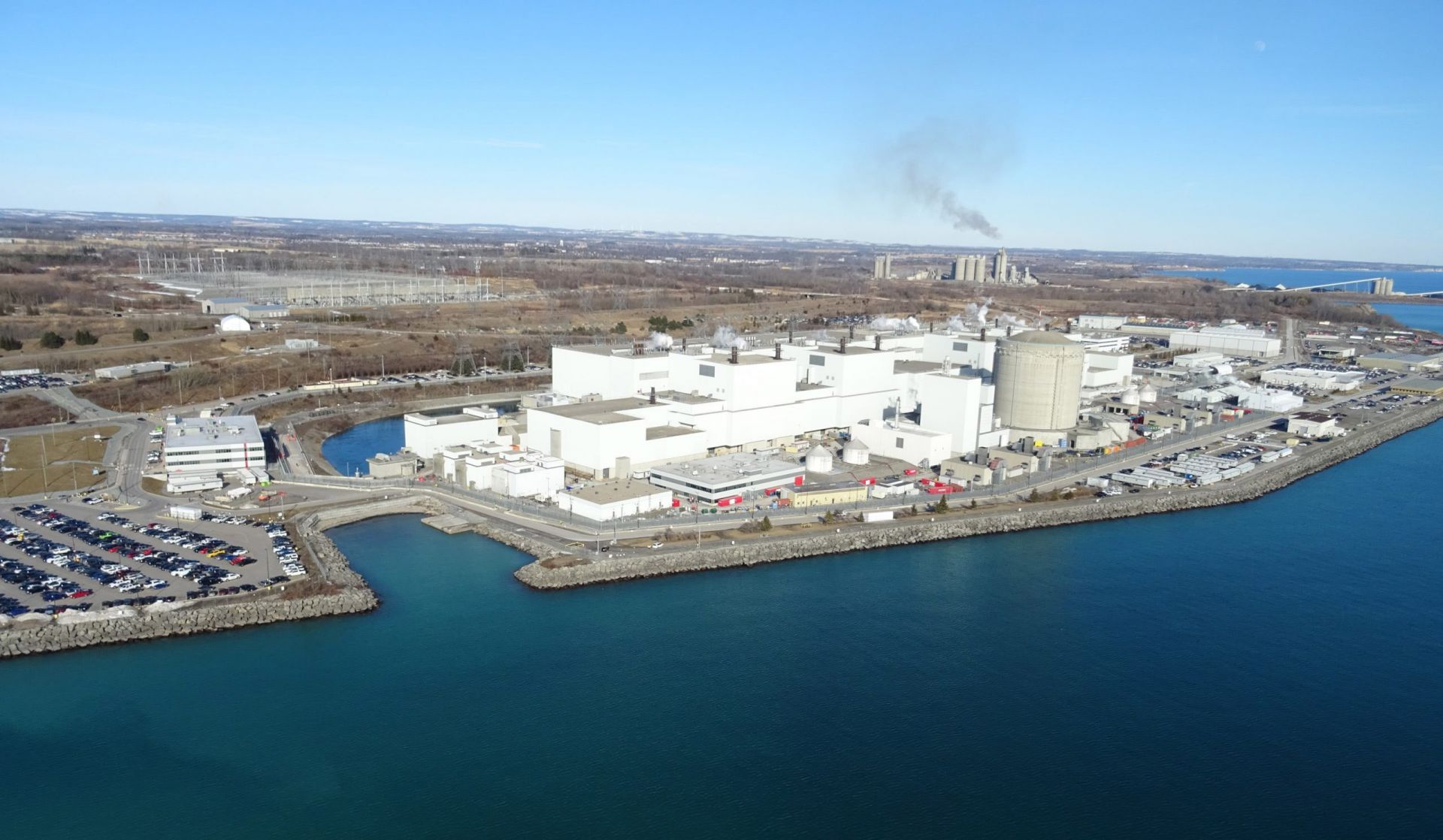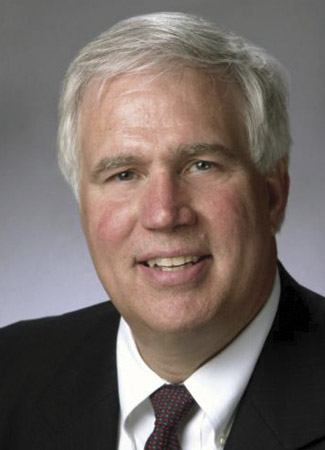U.S. to lead call at COP28 to triple nuclear energy by 2050
The United States will spearhead a pledge at the upcoming COP28 summit in Dubai to triple the world’s nuclear power capacity by 2050, according to a November 15 Bloomberg exclusive.
Published since 1959, Nuclear News is recognized worldwide as the flagship trade publication for the nuclear community. News reports cover plant operations, maintenance and security; policy and legislation; international developments; waste management and fuel; and business and contract award news.

A message from NV5, Inc.
Seconds Matter: Rethinking Nuclear Facility Security for the Modern Threat Landscape
The United States will spearhead a pledge at the upcoming COP28 summit in Dubai to triple the world’s nuclear power capacity by 2050, according to a November 15 Bloomberg exclusive.

In October, staff at Kairos Power’s testing and manufacturing facility in Albuquerque, N. M., began transferring 14 tons of molten fluoride salt coolant into an Engineering Test Unit (ETU)—the largest transfer of FLiBe (a mixture of lithium fluoride and beryllium fluoride) since the Molten Salt Reactor Experiment in 1969.

Ultra Safe Nuclear has signed a cooperative agreement with the Manila Electric Company (Meralco)—the Philippines’ largest electric distribution utility—to study the potential deployment of one or more of the company’s high-temperature, gas-cooled microreactors in the Philippines. The agreement, signed November 15, builds on a partnership between the two companies that was announced in August.

Blaming “the criminal actions of the ruscists,” Ukraine nuclear plant operator Energoatom this morning reported a primary-to-secondary reagent leak at Unit 5 of the Russian-occupied Zaporizhzhia nuclear power plant (ZNPP), as well as a partial blackout at the facility earlier this week. (The term “ruscist” [рашизм] is a portmanteau of the words “Russian” and “fascist.”)
About 150 students attended the first ever Nuclear Connection Science Fair last week, held in Oxford, U.K., and hosted by Nuclear Waste Services (NWS) and Women in Nuclear (WiN UK).

Emily Stein

Sylvia Saltzstein
Over the past 50 years, the use of nuclear energy has avoided approximately 70 gigatons of carbon dioxide emissions globally and 24 gigatons in the United States.1 Although carbon dioxide is not being released into the atmosphere when generating energy from nuclear, the waste this energy form does produce must be managed and permanently isolated away from people and the environment.

In response to Ontario’s ambitious nuclear development plans—including the plan by Ontario Power Generation to construct four small modular reactors at its Darlington nuclear site—Celeros Flow Technology has committed to expanding its Burlington, Ontario, facility to make it the first Ontario-based manufacturer of nuclear-qualified pumps, OPG announced last week.
Halden, Norway, known in nuclear circles for its long-running (1958–2018) research reactor, is partnering with Norsk Kjernekraft (aka Norwegian Nuclear Power) and Østfold Energi, a hydro, wind, and heat energy provider, to explore the idea of siting a small modular reactor plant in the municipality, located in southeastern Norway, near the border with Sweden.
Put nuclear technology in space or on the moon, and just as on Earth it can provide a power density unmatched by any other source. But what roles can nuclear power and propulsion play as the world enters a 21st-century space race? That was a key question put to six speakers during the November 14 American Nuclear Society Winter Meeting plenary session “Space: The (Next) Nuclear Frontier.”

Richard A. Meserve
Climate change presents a grave threat, demanding increasing reliance on low-carbon energy over the coming decades. Nuclear power today contributes half of U.S. low-carbon generation, and achievement of climate goals requires the continued operation of existing plants. But there are competitors for low-carbon energy, and nuclear’s further role remains uncertain. The National Academies of Sciences, Engineering, and Medicine (NASEM) conducted a study to explore the challenges that must be overcome for widespread new nuclear deployment.1 This article provides my summary of the study, highlighting and abbreviating some of its principal recommendations. Note that the italicized portions of the article are shortened versions of the recommendations in the report.

The European Commission intends to establish early next year an industrial alliance focused on small modular reactors, EC energy commissioner Kadri Simson announced last week.

Hopkins
This morning, just ahead of the plenary session “Space: The (Next) Nuclear Frontier,” American Nuclear Society Executive Director/CEO Craig Piercy invited John Hopkins, president and CEO of NuScale Power, to take the stage. The audience knew Hopkins was there not to announce a new contract or business development, but to answer the spoken and unspoken questions that followed last week’s announcement that the Carbon Free Power Project (CFPP)—for years expected to be NuScale’s first operational reactor—had been terminated by mutual agreement of the company and its customer, Utah Associated Municipal Power Systems (UAMPS).
Predictably, media headlines have burbled with doubt about the prospects for nuclear energy because one high-profile contract backed by significant cost-shared funds from the Department of Energy had been cancelled—out of dozens of ongoing projects by NuScale and other reactor developers. But those headlines—and the questions of curious ANS members—deserve a response.

AtkinsRéalis subsidiary Candu Energy and the Canadian Commercial Corporation, a federal crown entity, have announced the receipt of an award letter from Romania’s Nuclearelectrica for the provision of engineering, technology, and procurement of tooling and reactor components in support of the Cernavoda Unit 1 life-extension project.

The American Nuclear Society’s 2023 Winter Meeting and Expo opened on November 12 and its packed opening plenary the next day generated a lot of buzz. Featured speakers included West Virginia senators Shelley Moore Capito and Joe Manchin as well as Nuclear Regulatory Commission chair Christopher Hanson. They each addressed top issues facing the nuclear enterprise to a full house of more than 1,000 members of the wider nuclear community.
The Department of Energy Isotope Program and QSA Global, a Burlington, Mass.–based manufacturer of sealed radioisotope sources, agreed to a joint product development project to initiate domestic production of iridium-192, which is used in industrial gamma ray radiography.

Bowie

Turk
Two top energy officials—U.S. deputy secretary of energy David M. Turk and U.K. minister for nuclear and networks Andrew Bowie—met on November 8 in Washington, D.C., to talk about a “coordinated, strategic approach” to advance fusion energy demonstration and commercialization and “maximize value” for both nations.

ULC-Energy, a nuclear development and consultancy company based in the Netherlands, has signed a memorandum of intent with Danish carbon emission reduction technology firm Topsoe and Britain’s Rolls-Royce SMR to investigate the production of hydrogen using Topsoe’s solid oxide electrolysis cell (SOEC) technology and electricity and heat from a Rolls-Royce small modular reactor plant.

Outside my office, there is a display case filled with rock samples from all over the world. It contains a disk of translucent, orange salt from the Waste Isolation Pilot Plant near Carlsbad, N.M.; a core of white-and-bronze gneiss from the site of the future deep geologic repository in Eurajoki, Finland; several angular chunks of fine-grained, gray claystone from the underground research laboratory at Bure, France; and a piece of coarse-grained granite from the underground research tunnel in Daejeon, South Korea.

Focused Energy and Lawrence Livermore National Laboratory have signed a strategic partnership project agreement that will allow LLNL—home of the National Ignition Facility (NIF)—to help the company develop and assess isochoric compression target designs for inertial fusion energy. Focused Energy announced the news on November 7.
Cameco, the front-end uranium mining, milling, and conversion company headquartered in Saskatchewan, Canada, is now officially a co-owner of Westinghouse Electric Company—alongside Brookfield Asset Management, its publicly listed affiliate Brookfield Renewable Partners, and its institutional partners.